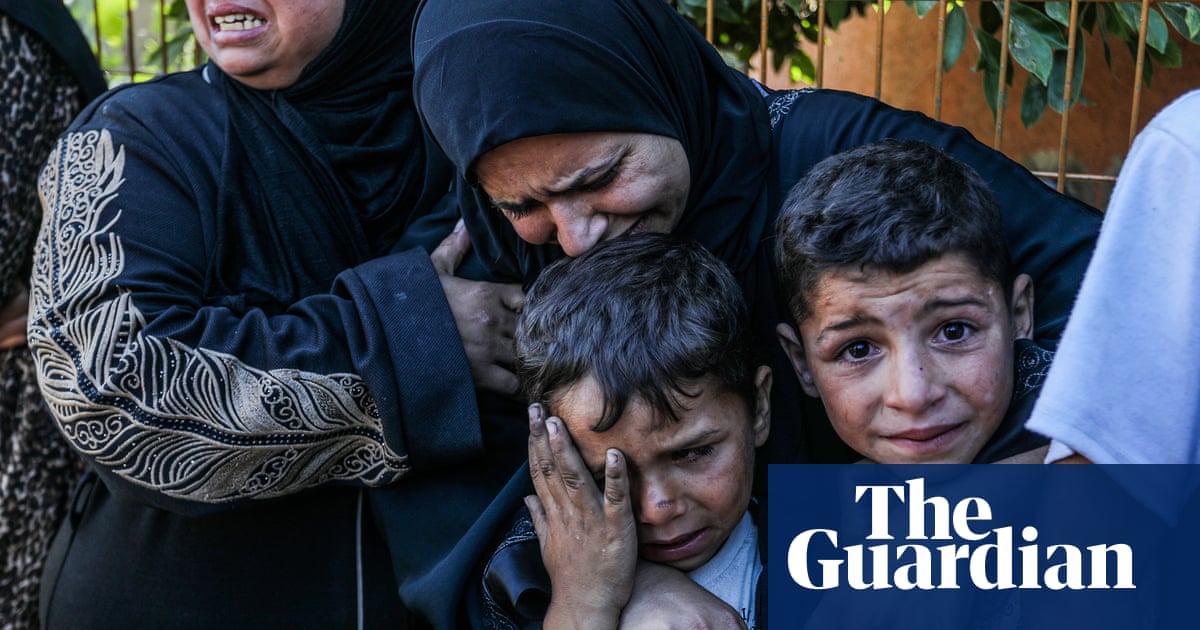Israel has agreed to a US ceasefire proposal for Gaza, the White House has said, and Hamas said it was reviewing the plan although its terms did not meet the group’s demands.
As aUS-backed system for distributing foodin the shattered territory expanded, Israeli media reported that prime minister Benjamin Netanyahu had told the families of hostages held in Gaza that Israel had accepted a deal presented by US President Donald Trump’s Middle East envoy Steve Witkoff.
Netanyahu’s office did not confirm the reports, but White House spokesperson Karoline Leavitt told reporters in Washington that Israel had signed off on the proposal.
She did not detail its contents. However, a draft seen by Reuters on Friday proposed a 60-day ceasefire and the release of 28 Israeli hostages – alive and dead – in the first week and the release of 125 Palestinian prisoners sentenced to life and the remains of 180 dead Palestinians.
The plan, which says it is guaranteed by Trump and mediators Egypt and Qatar, includes sending aid toGazaas soon as Hamas signs off on the ceasefire agreement. The plan stipulates that Hamas will release the last 30 hostages once a permanent ceasefire is in place.
The Palestinian militant group said it was studying the proposal, and senior Hamas official Sami Abu Zuhri told Reuters the group was still discussing it.
But Abu Zuhri said its terms echoed Israel’s position and do not contain commitments to end the war, withdraw Israeli troops or admit aid as Hamas has demanded.
Deep differences between Hamas and Israel have stymied previous attempts to restore a ceasefire that broke down in March after only two months when Israel renewed its offensive.
Israel has insisted that Hamas disarm completely and be dismantled as a military and governing force and that all 58 hostages still held in Gaza must be returned before it will agree to end the war.
Hamas has rejected the demand to give up its weapons and says Israel must pull its troops out of Gaza and commit to ending the war.
The Gaza Humanitarian Foundation, a private group backed by the US and endorsed by Israel, expanded its aid distribution to a third site on Thursday.
Heavily criticised by the UN and other aid groups as inadequate and flawed, the group’s operation began this week in Gaza, where the UN has said two million people are at risk of famine after Israel’s 11-week blockade on aid entering the territory.
The aid launch was marred bytumultuous scenes on Tuesdaywhen Israeli troops opened fire on a large crowd, killing at least one civilian and injuring dozens.
The chaotic start to the operation has raised international pressure on Israel to get more food in and halt the fighting in Gaza. GHF says it has so far supplied about 1.8 million meals and plans to open more sites in the coming weeks.
Witkoff told reporters on Wednesday that Washington was close to “sending out a new term sheet” about a ceasefire to the two sides in the conflict that has raged since October 2023.
“I have some very good feelings about getting to a long-term resolution, temporary ceasefire and a long-term resolution, a peaceful resolution, of that conflict,” Witkoff said then.
Israel has come under increasing international pressure, with many European countries that have normally been reluctant to criticise it openlydemanding an end to the warand a major relief effort.
Israel launched its campaign in Gaza in response to the devastating Hamas attack in southern Israel on 7 October 2023, that killed 1,200 people and saw 251 taken hostage into Gaza, according to Israeli tallies.
The campaign has killed more than 54,000 Palestinians, Gaza health officials say, and left the territory in ruins.
